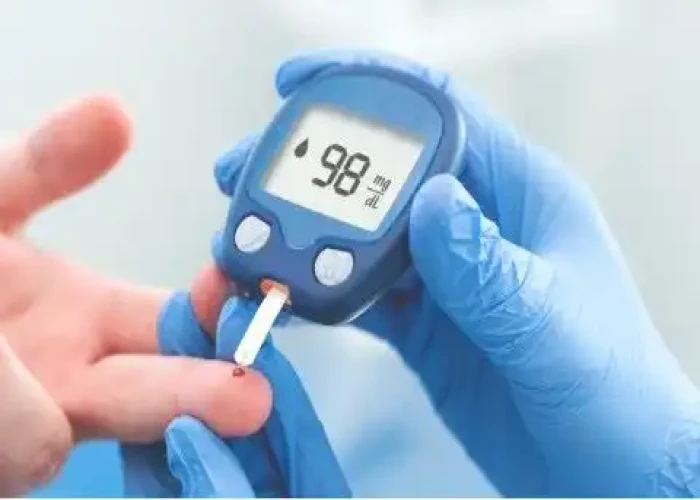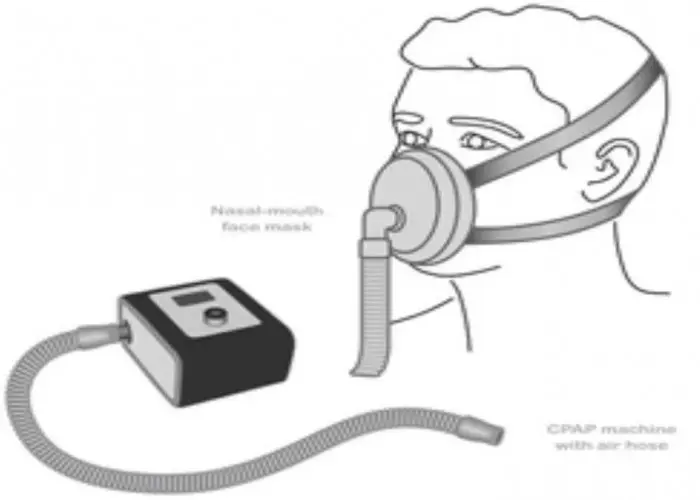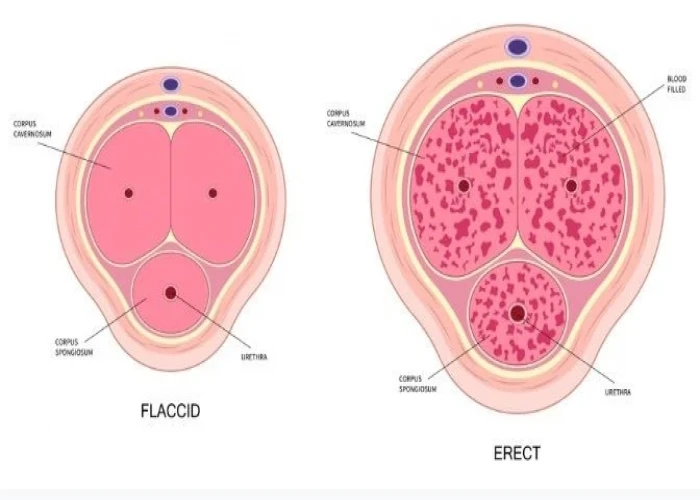 Welcome
Welcome
“May all be happy, may all be healed, may all be at peace and may no one ever suffer."
Peyronie's disease

Peyronie's disease is a condition characterized by the development of a fibrous plaque, or scar tissue, in the penis. This plaque can cause the penis to curve or bend during an erection, leading to pain and difficulty with sexual intercourse.
The exact cause of Peyronie's disease is not fully understood, but it is thought to be related to repeated trauma or injury to the penis, which can cause inflammation and subsequent scarring. Other risk factors for Peyronie's disease include family history, certain medical conditions such as diabetes, and smoking.
Symptoms of Peyronie's disease may include pain during an erection, curvature or bending of the penis during an erection, and difficulty with sexual intercourse. In some cases, the curvature may worsen over time.
Treatment options for Peyronie's disease may include medication, such as collagenase injections or oral vitamin E, which can help reduce the size of the plaque and improve symptoms. In some cases, surgery may be necessary to correct the curvature of the penis. Your doctor can provide more information on the best treatment options for your individual case.
Research Papers
Disease Signs and Symptoms
- Scar tissue
- Downward curve of penis
- Irritation inside penis
- Trouble getting an erection
- Small in penis size
Disease Causes
Peyronie's disease
The cause of Peyronie's disease isn't completely understood, but a number of factors appear to be involved.
It's thought Peyronie's disease generally results from repeated injury to the penis. For example, the penis might be damaged during sex, athletic activity or as the result of an accident. However, most often, no specific trauma to the penis is recalled.
During the healing process after injury to the penis, scar tissue forms in a disorganized manner. This can lead to a nodule you can feel or development of curvature.
Each side of the penis contains a spongelike tube (corpus cavernosum) that contains many tiny blood vessels. Each of the corpora cavernosa is encased in a sheath of elastic tissue called the tunica albuginea (TOO-nih-kuh al-BYOO-JIN-e-uh), which stretches during an erection.
When you become sexually aroused, blood flow to these chambers increases. As the chambers fill with blood, the penis expands, straightens and stiffens into an erection.
In Peyronie's disease, when the penis becomes erect, the region with the scar tissue doesn't stretch, and the penis bends or becomes disfigured and possibly painful.
In some men, Peyronie's disease comes on gradually and doesn't seem to be related to an injury. Researchers are investigating whether Peyronie's disease might be linked to an inherited trait or certain health conditions.
Disease Prevents
Disease Treatments
Treatment recommendations for Peyronie's disease depend on how long it's been since you began having symptoms.
- Acute phase. You have penile pain or changes in curvature or length or a deformity of the penis. The acute phase happens early in the disease and may last only two to four weeks but sometimes lasts for up to a year or longer.
- Chronic phase. Your symptoms are stable, and you have no penile pain or changes in curvature, length or deformity of the penis. The chronic phase happens later in the disease and generally occurs around three to 12 months after symptoms begin.
For the acute phase of the disease, treatments range from:
- Recommended. When used early in the disease process, penile traction therapy prevents length loss and minimizes the extent of curvature that occurs.
- Optional. Medical and injection therapies are optional in this phase, with some more effective than others.
- Not recommended. Surgery isn't recommended until the disease stabilizes, to avoid the need for repeat surgery.
For the chronic phase of the disease, several potential treatments are available. They may be done alone or in combination:
- Watchful waiting
- Injection treatments
- Traction therapy
- Surgery
Oral medications aren't recommended in the chronic phase, as they haven't been shown to be effective at this stage of the disease. Shock wave therapy, stem cells and platelet-rich plasma also haven't been shown to be effective in human studies.
Medications
A number of oral medications have been tried to treat Peyronie's disease, but they have not been shown to be effective consistently and are not as effective as surgery.
In some men, drugs injected directly into the penis might reduce curvature and pain associated with Peyronie's disease. Depending on the therapy, you might be given a local anesthetic to prevent pain during the injections.
If you have one of these treatments, you'll likely receive multiple injections over several months. Injection medications may also be used in combination with oral drugs or traction therapies.
Medications include:
- Collagenase. The only FDA-approved medication for Peyronie's disease is collagenase clostridium histolyticum (Xiaflex). This medicine has been approved for use in adult men with moderate to severe curvatures and a palpable nodule.
- This therapy has been shown to improve curvature and bothersome symptoms associated with Peyronie's disease. The treatment works by breaking down the buildup of collagen that causes penile curvature. Collagenase appears to be more effective when used in conjunction with "modeling," which is forcible bending of the penis in the opposite direction of the bend.
- Verapamil. This is a drug normally used to treat high blood pressure. It appears to disrupt the production of collagen, a protein that might be a key factor in the formation of Peyronie's disease scar tissue. The drug is well tolerated and may reduce pain, too.
- Interferon. This is a type of protein that appears to disrupt the production of fibrous tissue and help break it down. One placebo-controlled trial showed improvement using this therapy over placebo. Interferon also has been shown to reduce penile pain in men with Peyronie's disease.
Traction therapy
Penile traction therapy involves stretching the penis with a self-applied mechanical device for a period of time to improve penile length, curvature and deformity.
Depending on the specific device, traction therapy may need to be worn for as little as 30 minutes to as much as three to eight hours a day to achieve benefits. The effectiveness of treatment may also depend on the specific device used.
Traction therapy is recommended in the early phase of Peyronie's disease. It's the only treatment shown to improve penile length. Traction therapy may also be used in the chronic phase of the disease, combined with other treatments or after surgery for a better outcome.
Surgery
Your doctor might suggest surgery if the deformity of your penis is severe, sufficiently bothersome or prevents you from having sex. Surgery usually isn't recommended until you've had the condition for nine to 12 months and the curvature of your penis stops increasing and stabilizes for at least three to six months.
Common surgical methods include:
- Suturing (plicating) the unaffected side. A variety of procedures can be used to suture (plicate) the longer side of the penis — the side without scar tissue. This results in a straightening of the penis, although this is often limited to less severe curvatures.
- Several plication techniques may be used, generally resulting in similar success rates depending on surgeon experience and preference.
- Incision or excision and grafting. With this type of surgery, the surgeon makes one or more cuts in the scar tissue, allowing the sheath to stretch out and the penis to straighten. The surgeon might remove some of the scar tissue.
- A piece of tissue (graft) is often sewn into place to cover the holes in the tunica albuginea. The graft might be tissue from your own body, human or animal tissue, or a synthetic material.
- This procedure is generally used in men with more-severe curvature or deformity, such as indentations. This procedure is associated with greater risks of worsening erectile function when compared with the plication procedures.
- Penile implants. Surgically placed penile implants are inserted into the spongy tissue that fills with blood during an erection. The implants might be semirigid — manually bent down most of the time and bent upward for sexual intercourse.
- Another type of implant is inflated with a pump implanted in the scrotum. Penile implants might be considered if you have both Peyronie's disease and erectile dysfunction.
- When the implants are put in place, the surgeon might perform additional procedures to improve the curvature if needed.
The type of surgery used will depend on your condition. Your doctor will consider the location of scar tissue, the severity of your symptoms and other factors. If you're uncircumcised, your doctor might recommend a circumcision during surgery.
Depending on the type of surgery you have, you might be able to go home from the hospital the same day or you might need to stay overnight. Your surgeon will advise you on how long you should wait before going back to work — generally, a few days. After surgery for Peyronie's disease, you'll need to wait four to eight weeks before sexual activity.
Other treatments
A technique known as iontophoresis uses an electric current to administer a combination of verapamil and a steroid noninvasively through the skin. Available research has shown conflicting results on penile curvature and erectile function.
Several nondrug treatments for Peyronie's disease are being investigated, but evidence is limited on how well they work and possible side effects. These include using intense sound waves to break up scar tissue (shock wave therapy), stem cells, platelet-rich plasma and radiation therapy.
Disease Diagnoses
Disease Allopathic Generics
Disease Ayurvedic Generics
Disease Homeopathic Generics
Disease yoga
Peyronie's disease and Learn More about Diseases

Head lice

Nightmare disorder

Heartburn (Acidity)

Allergies

Type 2 diabetes in children

High blood pressure (hypertension)

Pancreatitis

Central sleep apnea
peyronie's disease, পিরোনির রোগ
To be happy, beautiful, healthy, wealthy, hale and long-lived stay with DM3S.
